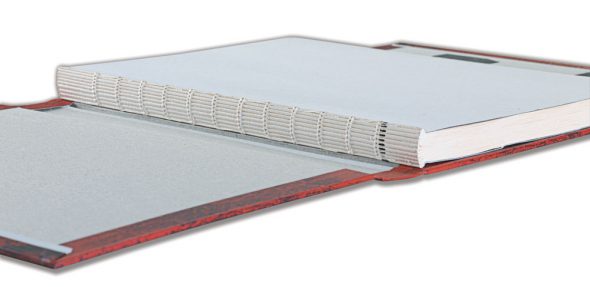This year we are celebrating the 25th anniversary of Paperblanks, but our story begins even earlier than that. Paperblanks is a part of the Hartley & Marks family, a publishing and design company whose origins lie in an old British Columbia log cabin in 1972. At that time we began publishing essays and books under the name Cloudburst Press, and from those very early days to today our passion for bookmaking has continued to grow.
Our love for book design is a constant force in all we do, so terms like “endpaper” and “laid paper” fly easily off our tongues. But if you haven’t spent over 40 years in publishing, you probably aren’t as familiar with them – but it’s not too late to learn! Freshen up your vocabulary with these 25 terms and impress even the most dedicated book people in your life!

- Endpaper – this blog’s namesake, this refers to the leaves of thick paper used to cover the inside of the cover board and support the hinge of the spine
- Flyleaf – the turning page of the endpaper
- Hinge – a fold in the endpaper between the pastedown and the flyleaf
- Pastedown – the endpaper that is pasted down to the insides of the front and back cover boards
- Cover Boards – the hard binder board that the cover is made from
- Signature – one sheet of paper, folded at least once but possibly many times, that is used to become a part of the book (can be used to create sets of 4, 8, 16, 32 or even 64 individual pages)
- Book Block – the pages (signatures) of a book when put together and prepared for casing, but before the case (cover) is added
- Smyth Sewn – a method of machine sewing through the folds of multiple signatures in order to form a book block
- Saddle Stitch – a stitch of thread or a wide staple passed through the fold of a signature to connect it to the cover (or, in some cases, to create a magazine or booklet without separate cover)
- Case Binding – a method of binding in which the book case (cover) is made separately from the book block and later attached to it
- Banded Spine – a book spine with one or more bands that are visibly raised where the cords attaching the cover pass underneath, or with bands placed there in a purely decorative fashion
- GSM – grams per square metre, referring to the weight of the paper (related to paper thickness and opacity)
- Spine – the narrow strip where the cover of a book is joined to the pages (the place between the front and back covers)
- Acid-Free – a paper mixture that has a pH above 7.0, making a more stable paper that won’t yellow or break down over time
- Laid Paper – paper that has a finely ribbed appearance created by the manufacturing process (as opposed to the uniform surface of wove paper)
- Grain Direction – the direction in which the majority of the fibres in a piece of paper are aligned
- Debossing – an image or words that are pressed into the surface of a paper or cover by using a metal plate and great pressure
- Embossing – an image or words that are raised above the surface of the page or cover by pressing the paper between two interlocking parts
- Fore-Edge – the edge of a leaf or board opposite from, and parallel to, the binding edge (the spine)
- Headband – a fabric band that is attached to the head (top) and foot (bottom) of the spine to add strength to points of stress and to conceal any visible glue or thread
- Recto – a right-hand page of an open book, or the front of a loose document
- Verso – a left-hand page of an open book, or the back of a loose document
- Bleed – printing that goes beyond the edge of the sheet (before trimming)
- Landscape – page layout or format in which the width is greater than the height
- Portrait – page layout or format in which the height is greater than the width

There are, of course, countless other terms associated with the art of bookmaking, but these twenty-five are a good place to begin. Try working these into your everyday conversation when describing your books or journals and you’ll sound like a bookbinding pro in no time!
About Paperblanks: 25 years ago, we created Paperblanks to help keep book heritage alive and vital in our modern age, and to offer an inspiring space for people to express themselves. Thanks for joining us on this journey! For more about Paperblanks, go to our website at paperblanks.com.






